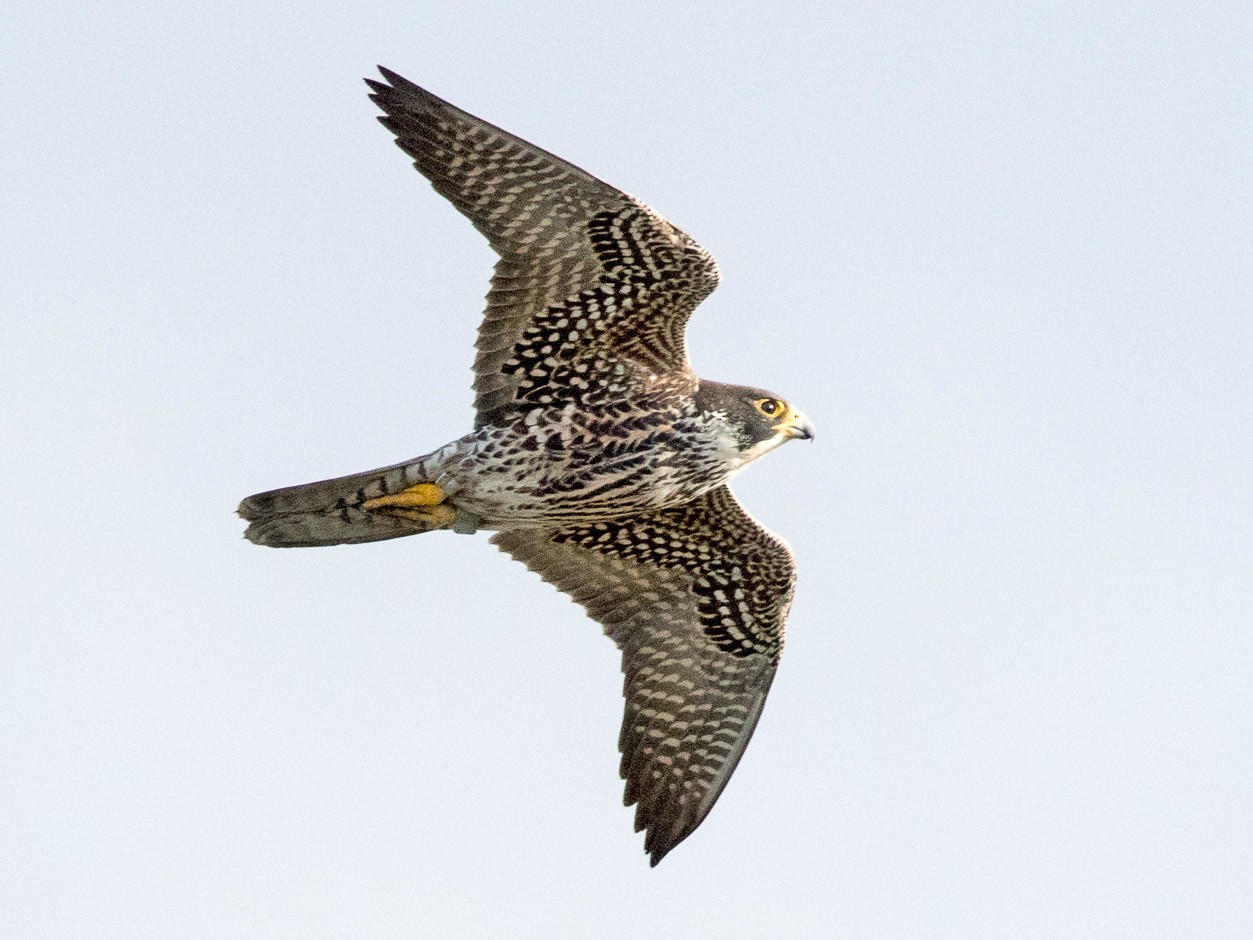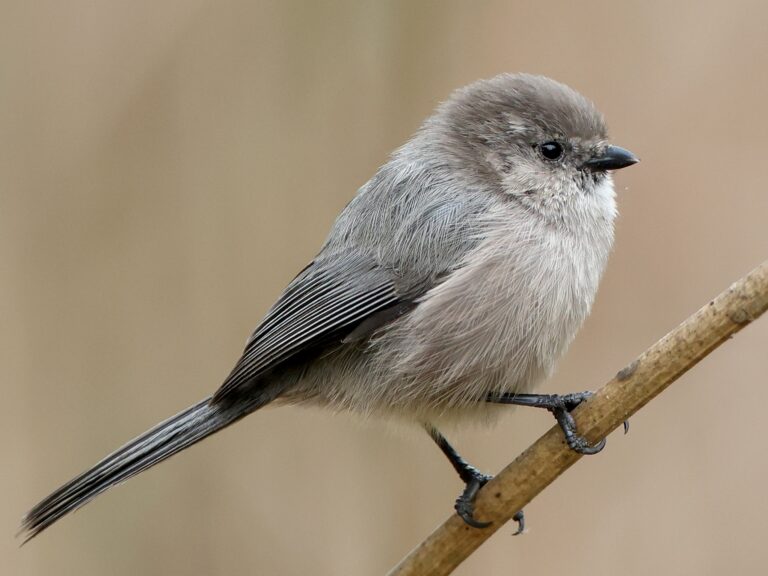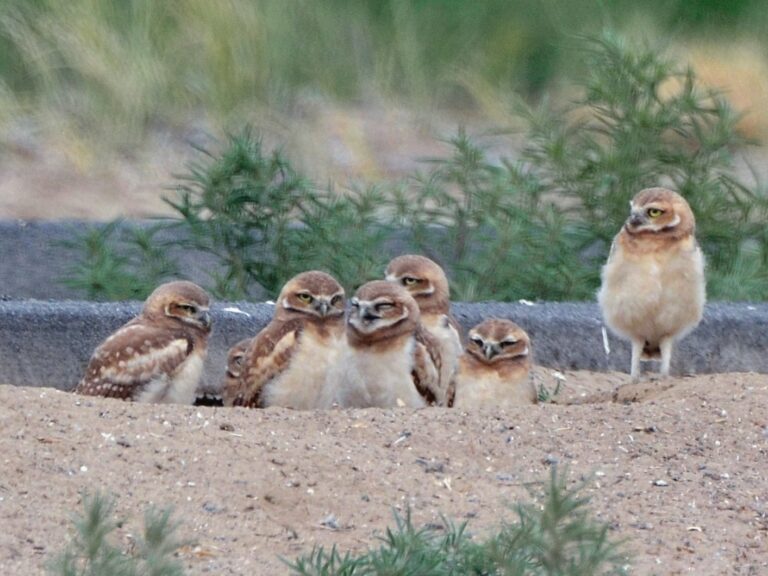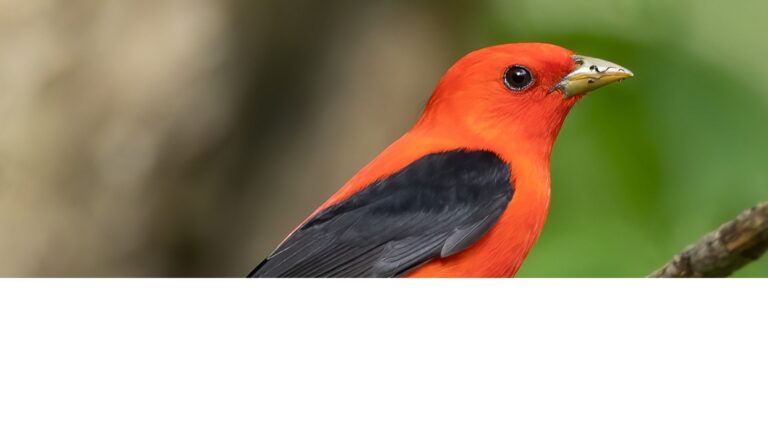Peregrine Falcon: The Fastest Bird in the World
The peregrine falcon, known scientifically as Falco peregrinus, is renowned for being the fastest bird on the planet.
This remarkable bird can reach speeds of over 240 miles per hour during its iconic hunting stoop, making it a master of the skies.
With its sharp eyesight and agile flight, the peregrine falcon captivates bird watchers and nature enthusiasts alike.
These birds are found in diverse habitats, from urban settings to remote cliffs. Their adaptability has played a significant role in their survival, particularly in recovering populations across various regions.
The peregrine falcon’s cultural and historical significance also enriches its story, symbolizing speed and courage in many traditions.
As conservation efforts continue, understanding more about this incredible species is vital.
This blog post will explore the identification, lifestyle, and threats faced by the peregrine falcon, shedding light on why it remains a crucial part of our ecosystem.
Key Takeaways
- The peregrine falcon is the fastest bird in the world.
- It has adapted to various habitats, thriving in both urban and natural environments.
- Conservation efforts are critical for maintaining healthy peregrine populations.
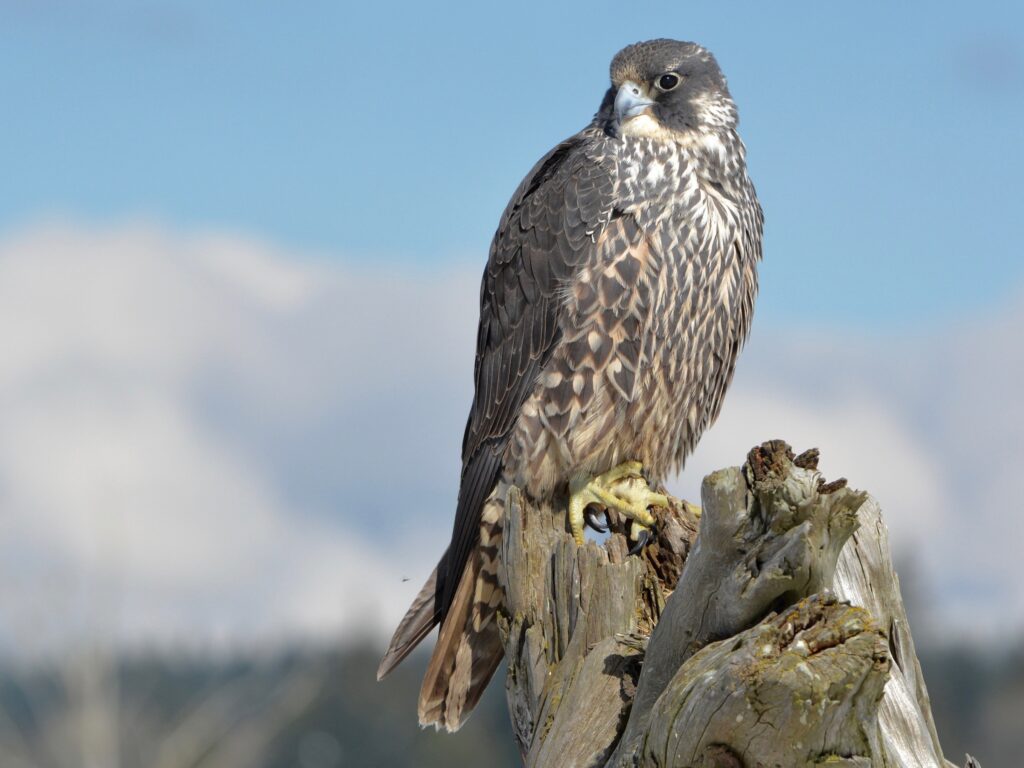
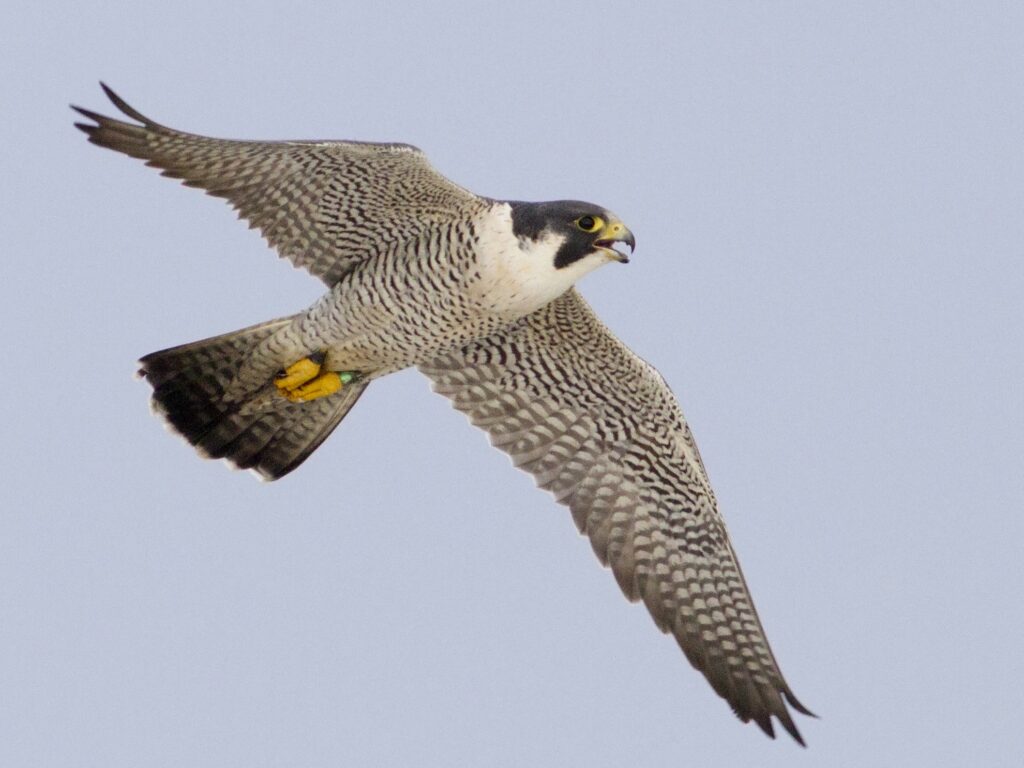
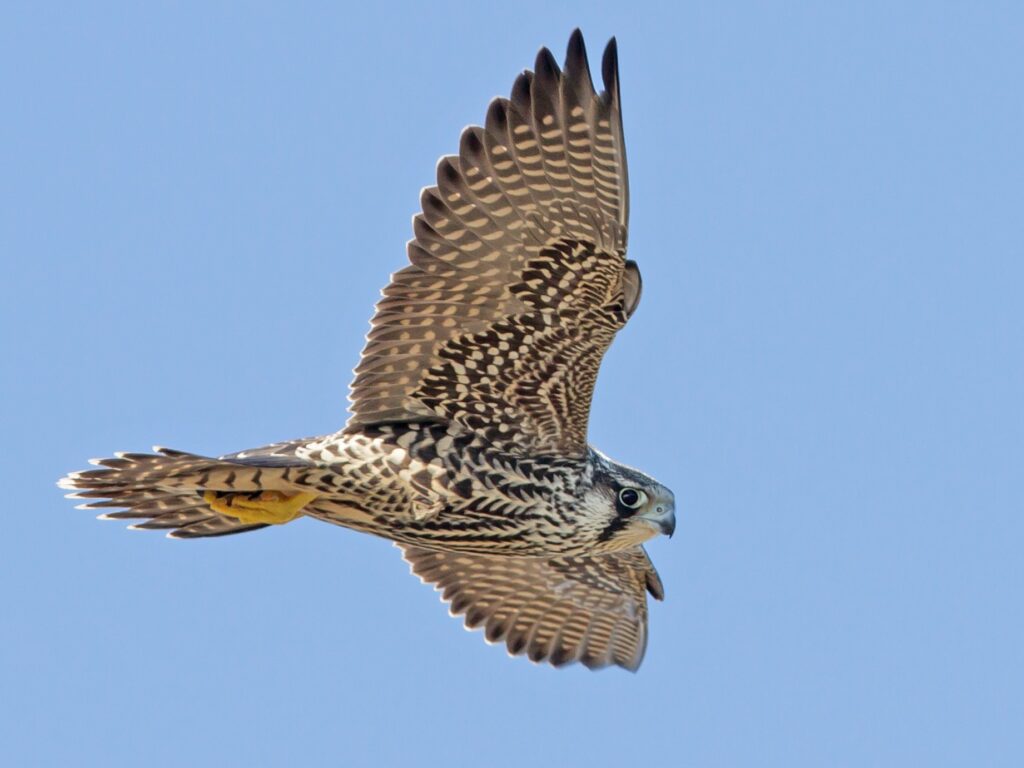
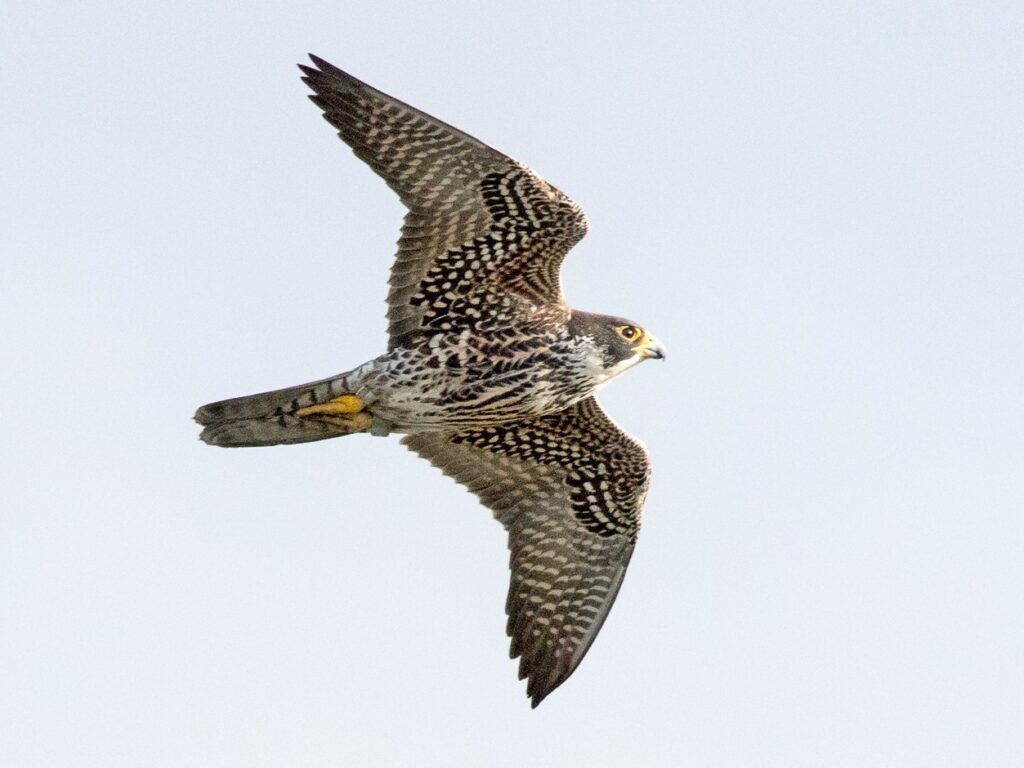
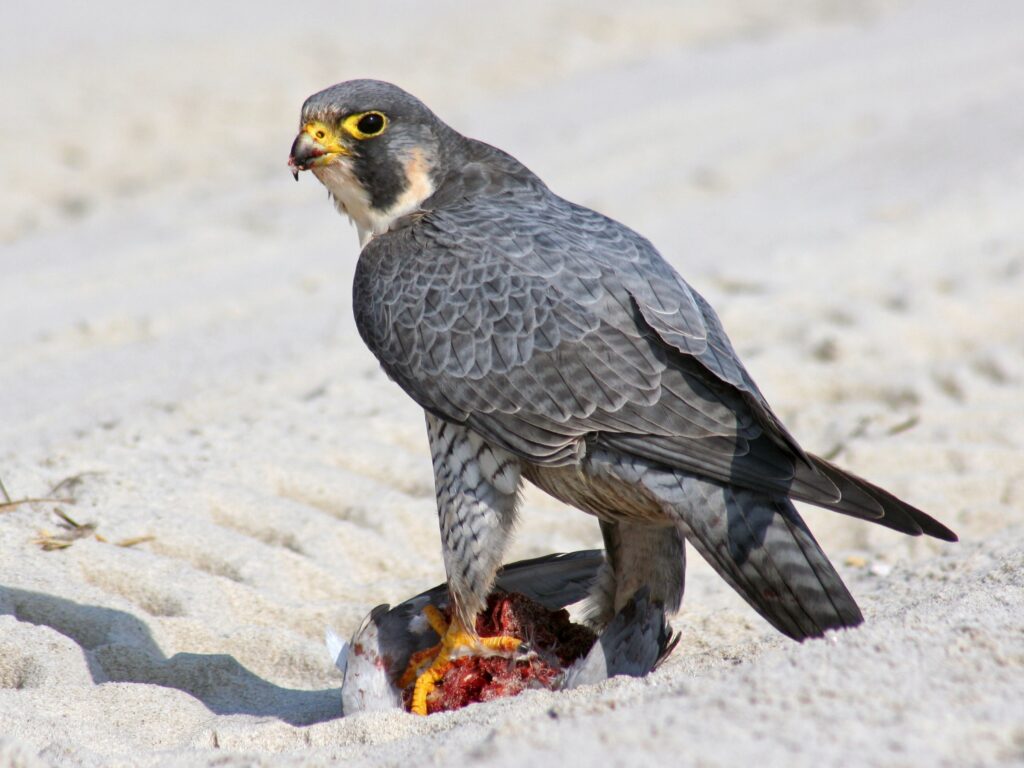

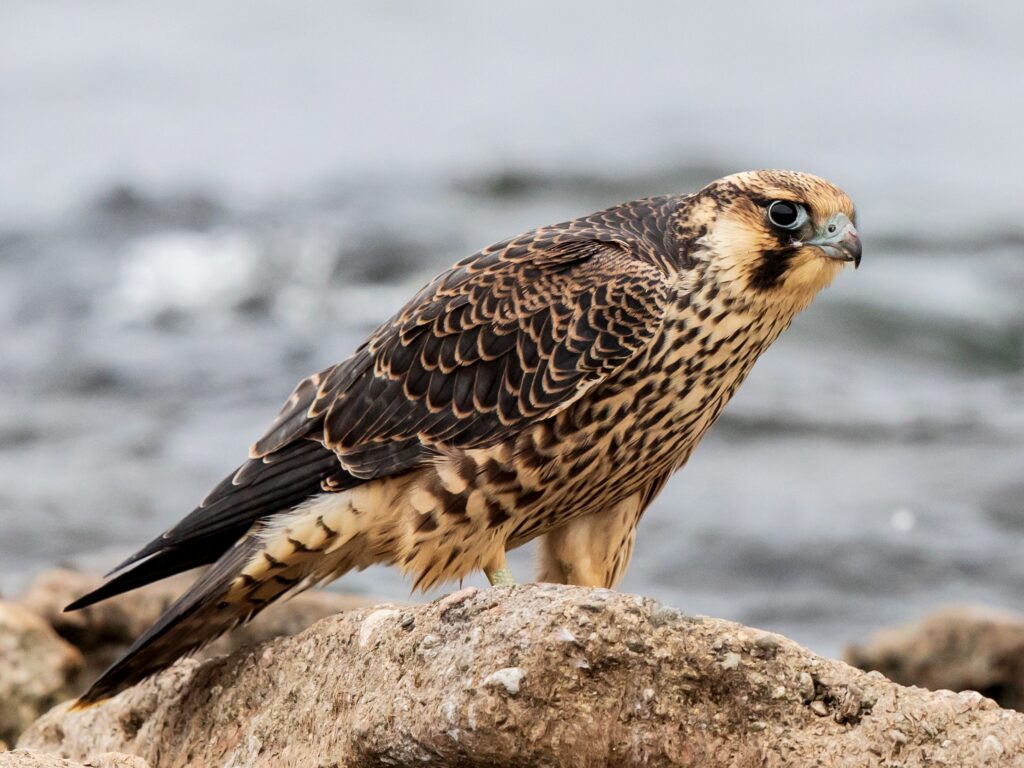
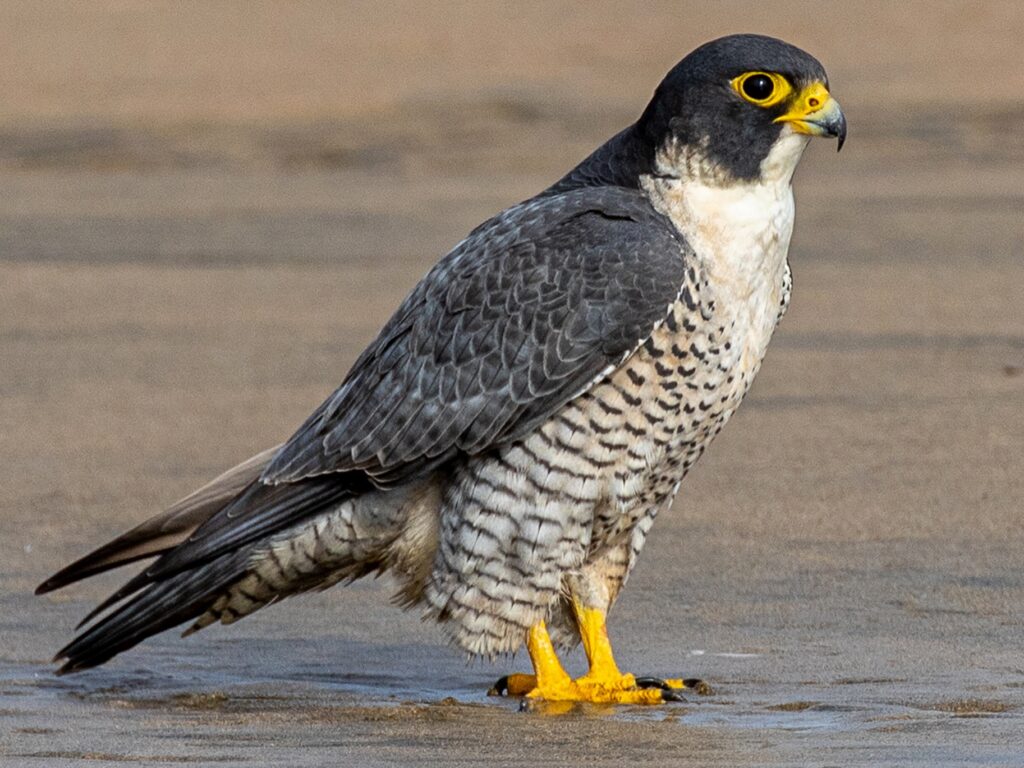
Peregrine Falcon Identification
The peregrine falcon is a remarkable bird known for its speed and hunting skill. Identification is essential for birdwatchers and researchers.
Key features include physical characteristics and noticeable sexual dimorphism between males and females.
Physical Characteristics
Peregrine falcons are medium-sized birds of prey, measuring about 15 to 20 inches in length. They have a wingspan ranging from 29 to 43 inches.
Their body shape is aerodynamic, which aids in their swift flight.
The plumage is typically a blue-gray color on the back, while the underparts are lighter with dark horizontal stripes. Their distinctive facial markings include a dark “moustache” that contrasts with their pale cheeks.
Pointed wings and a long tail enhance their agility while hunting. These features make identification straightforward when observing them in flight or perched in their territory.
Sexual Dimorphism
Sexual dimorphism is evident in peregrine falcons, which means males and females have different physical characteristics.
Males are smaller, weighing between 1.5 to 2.2 pounds, while females can weigh up to 3.5 pounds.
In addition to size differences, females tend to have darker plumage than males. This coloration may aid in camouflage during nesting. The noticeable size difference can help birdwatchers accurately identify the gender of a peregrine falcon in the wild.
Habitat and Distribution
Peregrine falcons are highly adaptable birds of prey found in a variety of habitats across the globe. They thrive in coastal areas, cliffs, and even urban settings.
Their distribution extends to every continent except Antarctica, showcasing their remarkable versatility and range.
Global Range
Peregrine falcons inhabit diverse regions around the world.
Their global range includes locations on every continent except Antarctica. They often prefer habitats near coastlines and cliffs, which provide natural nesting sites.
In North America, peregrines are commonly seen along shorelines and mountainous regions. They rely on these elevated spots for hunting and nesting.
In addition to rural areas, they can also be found in cities, where they adapt to urban structures.
Tall buildings and skyscrapers serve as alternative nesting sites, allowing these birds to thrive in densely populated environments.
Urban Adaptation
Urban environments have proven to be surprisingly suitable for peregrine falcons.
They often utilize high-rise buildings as nesting sites, mimicking the cliffs they naturally prefer. Bridges and other tall structures also serve as ideal perches for hunting.
In cities, peregrines find a different but abundant food source.
They primarily hunt smaller birds, which are plentiful in urban areas.
This adaptability has allowed them to not only survive but also flourish in environments filled with human activity. Their presence in urban settings highlights their resilience and ability to thrive in diverse habitats.
Behavior and Lifestyle
Peregrine falcons exhibit fascinating behavior and lifestyle traits that make them unique among raptors.
Their feeding habits, breeding practices, and flight patterns demonstrate their adaptability and efficiency as predators.
Feeding Habits
Peregrine falcons are known for their varied diet, primarily consisting of birds such as pigeons, ducks, and shorebirds.
They also consume small mammals and insects when birds are less available.
These raptors are skilled hunters.
They often employ a method called stooping, where they dive at high speeds — sometimes exceeding 240 mph — to catch prey mid-flight.
To locate food, peregrines use their keen eyesight. They often hunt from high vantage points or during quick chases.
Their powerful wings allow for sudden bursts of speed, making them effective at capturing agile prey.
Breeding and Nesting
Nesting typically occurs in cliff ledges or tall structures in urban areas.
Peregrine falcons create a simple nest called a scrape, which is a shallow depression made in gravel or soil that holds their eggs. The nesting season usually begins in early spring.
Females lay about 3 to 5 eggs, which they incubate for around 30 days.
During this period, the male provides food for the female.
After hatching, both parents care for the chicks until they fledge, which usually occurs after about 6 weeks.
This cooperative rearing helps ensure their young have the best chance of survival.
Flight Patterns
Peregrine falcons are renowned for their astonishing flight abilities.
They are powerful, fast-flying birds that can navigate challenging environments with ease.
During flight, they often perform acrobatic maneuvers, showcasing their strength and agility.
Their wings are long and pointed, allowing for rapid acceleration and impressive agility.
In addition, their flight patterns are adaptable; they can soar gracefully or engage in swift chases.
This versatility helps them patrol their territory effectively, securing it from intruders while hunting for prey.
Conservation Status
The conservation status of the peregrine falcon reflects significant recovery efforts, challenges, and ongoing initiatives to ensure this species thrives.
Key factors impacting their status include past threats from pesticides and current conservation strategies.
Endangered Species Recovery
The peregrine falcon was once listed as endangered due to drastic population declines caused by organochlorine pesticides, especially DDT.
These chemicals weakened eggshells, leading to decreased reproductive success.
By the 1980s, recovery efforts began to take shape through bans on harmful pesticides and habitat protection.
Thanks to intensive conservation actions, including captive breeding and successful reintroductions into the wild, the peregrine falcon has rebounded significantly.
By 1999, it was removed from the endangered species list and listed as a species of “least concern.”
The recovery is seen as a triumph for wildlife conservation and the power of legal protections.
Current Challenges
Despite its recovery, the peregrine falcon still faces several challenges.
Habitat destruction continues to threaten its nesting sites, particularly in urban areas.
Furthermore, the use of modern pesticides, while less harmful than DDT, still poses risks through pesticide poisoning.
Other threats include collisions with buildings and vehicles, which can lead to fatalities.
Climate change also impacts prey availability, which can affect breeding and survival rates.
Conservationists remain vigilant in monitoring these threats to maintain the falcon’s population.
Conservation Efforts
Conservation organizations are actively engaged in protecting peregrine falcons through various initiatives.
Public education plays a crucial role by raising awareness about the importance of this bird of prey in ecosystems.
Ongoing monitoring of breeding populations helps to track success and potential issues.
Captive breeding programs are essential for bolstering numbers and introducing genetic diversity.
The falconry community also supports these efforts by promoting responsible practices and habitat conservation.
Cultural and Historical Significance
The peregrine falcon has played an important role in culture and history, especially in the practice of falconry. This ancient art involves the training of birds of prey for hunting, and the peregrine is one of the most sought-after species.
Falconry dates back thousands of years, with evidence showing its use in ancient cultures across Asia, Europe, and the Middle East.
This activity symbolizes power and nobility, making the peregrine falcon a cultural icon for many societies.
In the family Falconidae, peregrines belong to the order falconiformes, known for their speed and agility.
These birds have been admired not only for their hunting skills but also for their stunning beauty.
Throughout history, the peregrine falcon has inspired art, literature, and even sport.
It became a symbol of cultural significance, representing grace and freedom.
With their impressive diving speeds, peregrines have fascinated naturalists and birdwatchers alike. Their role in the ecosystem underscores their value beyond aesthetics.
Moreover, legal measures have been taken to protect peregrine populations, showing societal recognition of their importance.
The birds have become a symbol of wildlife conservation efforts in modern times.
Frequently Asked Questions
Peregrine falcons have unique characteristics that set them apart from other birds of prey.
Their diet, hunting techniques, adaptations, habitat preferences, size, and the regulations surrounding their ownership are important topics for understanding this remarkable species.
What distinguishes the peregrine falcon’s diet from other birds of prey?
The peregrine falcon primarily feeds on medium-sized birds, which it catches in the air.
Unlike some other raptors that may hunt small mammals or reptiles, peregrines rely on speed and agility to catch their prey.
Their diet often includes species like pigeons, doves, and songbirds.
How does the peregrine falcon’s hunting technique contribute to its status as a top predator?
This falcon is renowned for its exceptional hunting technique called the stoop.
During the stoop, it dives from great heights, reaching speeds of over 240 miles per hour.
This incredible speed, combined with sharp talons and keen eyesight, makes the peregrine an efficient and deadly hunter.
What adaptations allow the peregrine falcon to achieve such high speeds during flight?
Peregrine falcons possess several adaptations that enhance their flight capabilities.
Their long, pointed wings and aerodynamic body minimize drag.
A unique respiratory system allows for better oxygen intake at high speeds, supporting their incredible bursts of speed during dives.
In what types of habitats can peregrine falcons typically be found?
These falcons are versatile and can adapt to various habitats.
They are commonly found in urban areas, coastal regions, and mountainous terrains.
Peregrine falcons often nest on tall cliffs or high buildings, providing good vantage points for hunting.
How do the size and wingspan of the peregrine falcon compare to other raptors?
Peregrine falcons are medium-sized birds of prey.
Adults typically measure about 15 to 20 inches in length, with a wingspan ranging from 29 to 43 inches.
Compared to other raptors like eagles and hawks, they are smaller but make up for it with their speed and hunting skills.
Can peregrine falcons be legally owned, and what are the regulations surrounding falconry?
In many places, peregrine falcons can be kept under specific regulations for falconry.
Prospective owners usually need a permit and must undergo training.
Rules vary by region, so it is essential to check local laws regarding ownership, care, and conservation of these birds.
